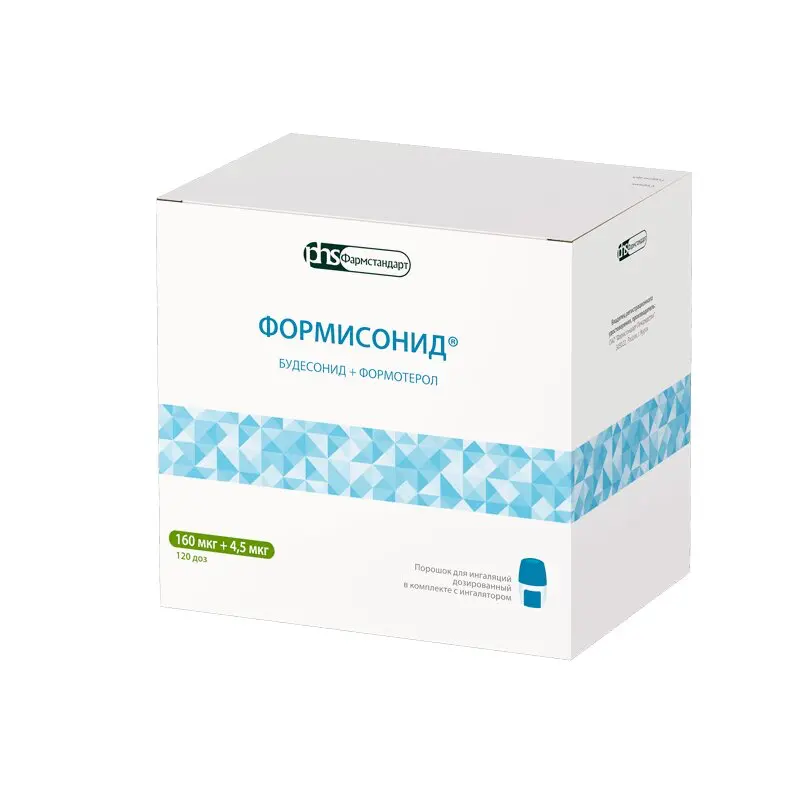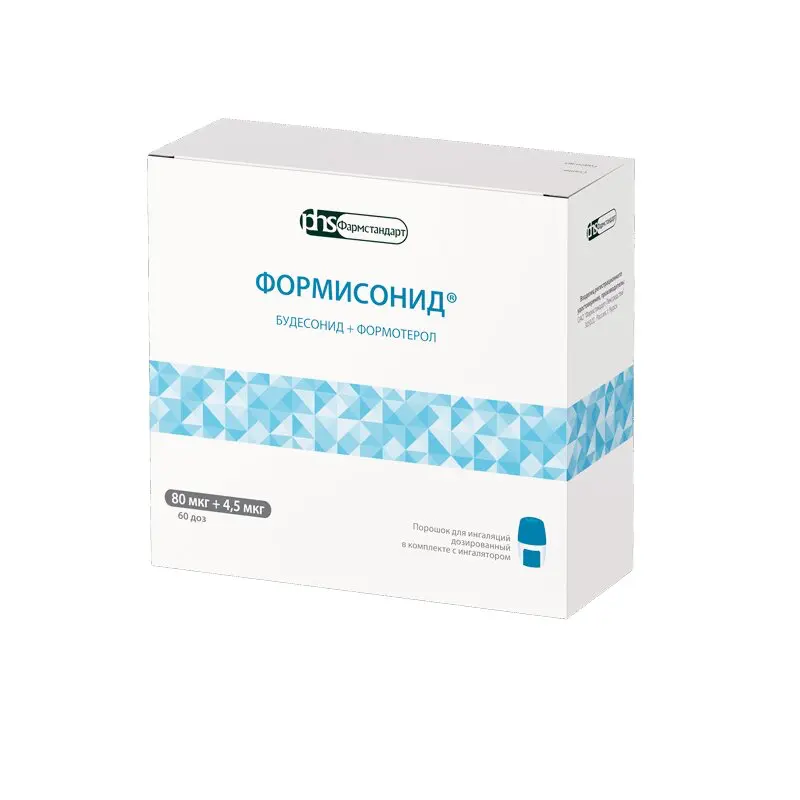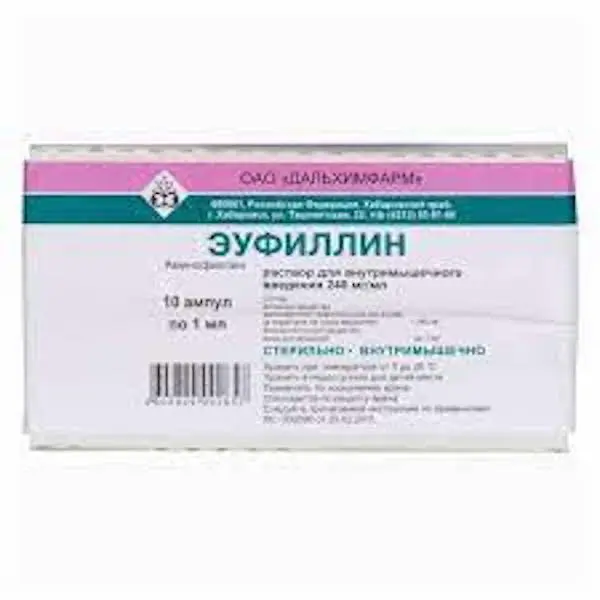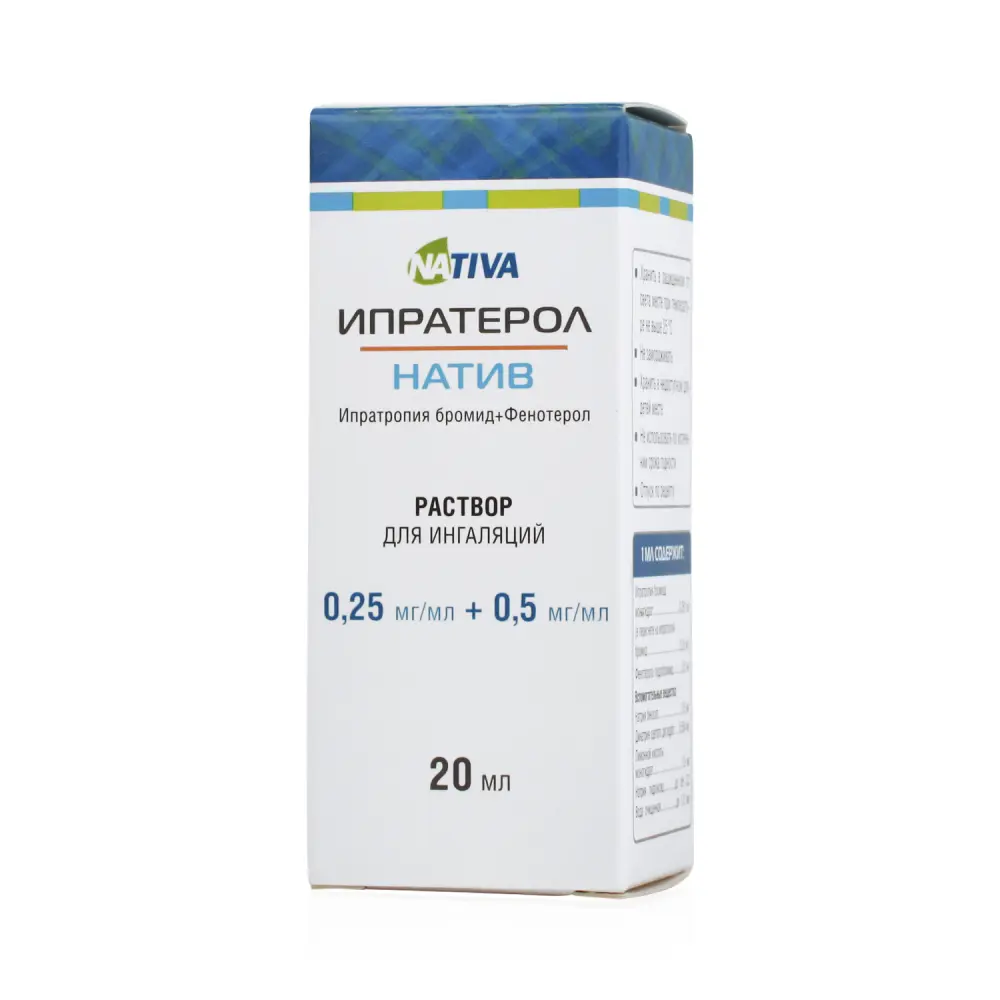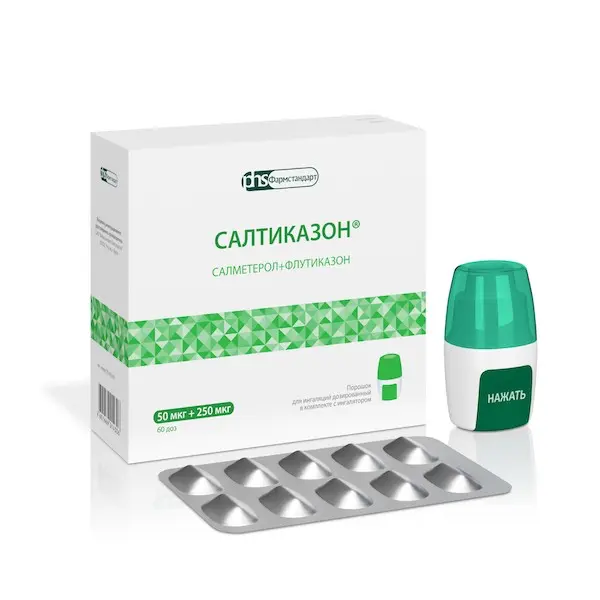Description
Budesonide, formoterol (Formisonid) 160mcg+4.5 mcg Pharmacodynamics
Budesonide, formoterol (Formisonid) 160mcg+4.5 mcg contains budesonide and formoterol which have different mechanisms of action and additive effect with respect to reduction of bronchial asthma exacerbations frequency. Special properties of budesonide and formoterol give an opportunity to use their combination for relieving attacks/symptoms with anti-inflammatory action, or as maintenance therapy of bronchial asthma.
Budesonide. Budesonide is a glucocorticosteroid that, following inhalation, has a rapid (within hours) and dose-dependent anti-inflammatory effect on the airways, reducing the severity of symptoms and the frequency of exacerbations of bronchial asthma. When prescribing inhaled budesonide, there is a lower incidence of serious adverse effects than when using systemic glucocorticosteroids. It reduces the severity of bronchial mucosal edema, mucus production, sputum formation and airway hyperresponsiveness. The exact mechanism of the anti-inflammatory effect of glucocorticosteroids is unknown.
Formoterol. Formoterol is a selective ?2-adrenoreceptor agonist, after inhalation of which there is rapid and prolonged relaxation of bronchial smooth muscle in patients with reversible airway obstruction. The dose-dependent bronchodilator effect occurs within 1-3 minutes after inhalation and persists for at least 12 hours after a single dose.
Indications
– Bronchial asthma, to achieve overall disease control, including prevention and relief of symptoms, and to reduce the risk of exacerbations.
Formisonide® is suitable for the therapy of bronchial asthma of any severity, when inhaled glucocorticosteroids are appropriate.
– Chronic Obstructive Pulmonary Disease (COPD), as symptomatic therapy in patients with COPD with post-bronchodilator BEP1 < 70% of proper and with a history of exacerbations despite regular bronchodilator therapy.
Contraindications .
-High sensitivity to budesonide, formoterol or inhaled lactose.
-Lactose intolerance, lactase deficiency or glucose-galactase malabsorption.
-Children under 12 years of age (for doses of 160 mcg + 4.5 mcg and 320 mcg + 9 mcg).
With caution
Pulmonary tuberculosis (active or inactive form); fungal, viral or bacterial respiratory infections, thyrotoxicosis, pheochromocytoma, diabetes mellitus, decreased adrenal cortex function, uncontrolled hypokalemia, hypertrophic obstructive cardiomyopathy, idiopathic hypertrophic subaortic stenosis severe arterial hypertension, aneurysm of any localization or other severe cardiovascular diseases (coronary heart disease, tachyarrhythmia or severe heart failure), QT interval prolongation (formoterol administration may cause QT-interval prolongation).
Administration during pregnancy and breast-feeding
There are no clinical data on the use of Formisonid or concomitant use of budesonide and formoterol during pregnancy.
Pregnancy. During pregnancy, Budesonide, formoterol (Formisonid) 160mcg+4.5 mcg should be used only in cases when the benefits of the drug exceed the potential risk to the fetus. The lowest effective dose of budesonide necessary to maintain adequate control of bronchial asthma symptoms should be used.
Directions for use and dosages
- For inhalation use.
- Bronchial asthma.
- Selection of dose of Formisonid preparation is individual and depends on severity of disease. This must be taken into account not only at the beginning of treatment with combination drugs, but also when changing a maintenance dose of the drug.
- Patients should be continuously monitored by a physician for adequate dosage adjustment of Formisonid.
- Budesonide, formoterol (Formisonid) 160mcg+4.5 mcg can be used according to different therapy approaches:
- a. Formisonid for seizure/symptom control with anti-inflammatory action (patients with mild bronchial asthma).
- B. Formisonid as maintenance therapy and for attack/symptom control with anti-inflammatory action.
- Alternatively, Budesonide, formoterol (Formisonid) 160mcg+4.5 mcg can be used as fixed-dose therapy:
- c. Formisonid as maintenance therapy (fixed dose).
- a. Formisonid for seizure/symptom control with anti-inflammatory effects (patients with mild bronchial asthma)
- Budesonide, formoterol (Formisonid) 160mcg+4.5 mcg is taken on demand to relieve bronchial asthma symptoms when they develop and to prevent bronchoconstriction caused by allergens or exercise (or to prevent symptoms in situations assessed by the patient as likely to provoke a bronchial asthma attack). Formoterol, the active substance of Formisonid, provides a rapid onset of action (within 1-3 minutes) with prolonged bronchodilation (at least 12 hours after a single dose) in reversible airway obstruction. The patient should have Formisonide on hand at all times for symptomatic relief.
- The physician should discuss allergen exposure and exercise volume with the patient and consider them when recommending the frequency of the drug.
- Adults and adolescents (12 years and older): Patients should take 1 inhalation on demand when symptoms develop and to prevent bronchoconstriction caused by allergens or exercise to control bronchial asthma. If symptoms further increase within a few minutes, 1 additional inhalation is administered, but no more than 6 inhalations to control 1 attack.
- Usually no more than 8 inhalations per day are required, but the number of inhalations may be increased to 12 per day for short periods of time. Patients receiving more than 8 inhalations per day are advised to seek medical attention for reassessment and review of therapy and bronchial asthma.
- Close monitoring of dose-dependent and side effects in patients using a large number of inhalations on demand is required.
- Children under 12 years of age: the efficacy and safety of Formisonid for control of attacks/symptoms with anti-inflammatory effects in children under 12 years of age have not been studied.
- B. Formisonid as maintenance therapy and for seizure/symptom management with anti-inflammatory effects
- If maintenance therapy with a combination of an inhaled glucocorticosteroid and a long-acting beta2-adrenoreceptor agonist is required, the patient may take Formisonid as maintenance therapy and in addition for seizure/symptom control with anti-inflammatory effects. The patient should have Formisonid on hand at all times for symptom relief. Budesonide, formoterol (Formisonid) 160mcg+4.5 mcg as maintenance therapy and for relief of attacks/symptoms with anti-inflammatory effects is particularly indicated in patients with:
- – Inadequate control of bronchial asthma and the need for frequent use of medications to relieve attacks/symptoms;
- – A history of bronchial asthma exacerbations that required medical intervention.
- The physician should discuss allergen exposure and exercise volume with the patient and consider them when recommending the frequency of medication administration.
- Adults and adolescents (12 years and older): Patients should take 1 inhalation on demand when symptoms develop and to prevent bronchoconstriction caused by allergens or exercise to control bronchial asthma. If symptoms further increase within a few minutes, 1 additional inhalation is prescribed, but no more than 6 inhalations to control 1 attack. Patients also take the recommended maintenance dose of 2 inhalations per day, 1 inhalation in the morning and evening or 2 inhalations once in the morning or evening only.
- It is not usually necessary to prescribe more than 8 inhalations per day, but the number of inhalations may be increased to 12 per day for short periods of time. Patients receiving more than 8 inhalations per day are advised to seek medical attention for reassessment and revision of maintenance therapy.
- Close monitoring of dose-dependent side effects is required in patients using a large number of inhalations on demand.
- Children under 12 years of age: Formisonid is not recommended for children under 12 years of age as supportive therapy and for relief of attacks/symptoms with anti-inflammatory effects.
- c. Formisonid as maintenance therapy (fixed dose)
When maintenance therapy with a combination of an inhaled glucocorticosteroid and a long-acting beta2-adrenoreceptor agonist is needed, the patient may take Formisonid in a fixed daily dose and use a separate short-acting bronchodilator for symptom relief. - Adults (18 years and older): 1 to 2 inhalations twice daily. If necessary, the dose may be increased to 4 inhalations twice a day.
Adolescents (12-17 years old): 1 – 2 inhalations twice a day. - Children aged 6-11 years old: For children aged 6-11 years old a smaller dosage (80 micrograms + 4.5 micrograms) is available.
- Children under 6 years of age: Budesonide, formoterol (Formisonid) 160mcg+4.5 mcg is not recommended for children under 6 years of age.
- The dose should be reduced to the lowest dose that maintains optimal control of bronchial asthma symptoms. After achieving optimal control of bronchial asthma symptoms when taking the drug twice a day, it is recommended to titrate the dose to the lowest effective dose, up to once a day in those cases when, in the opinion of the physician, the patient requires maintenance therapy with a long-acting bronchodilator in combination with an inhaled glucocorticosteroid.
In the event that individual patients require a different active ingredient dose combination than Formisonide®, beta2-adrenomimetics and/or glucocorticosteroids in separate inhalers should be prescribed. - Increased frequency of use of short-acting beta2-adrenomimetics is an indicator of worsening overall disease control and requires a review of antiasthmatic therapy.
COPD - Adults: 2 inhalations twice daily.
Special patient groups: there is no need for special selection of the drug dose for elderly patients. There are no data on the use of Budesonide, formoterol (Formisonid) 160mcg+4.5 mcg in patients with renal or hepatic impairment. Because budesonide and formoterol are mainly eliminated by hepatic metabolism, a slower drug excretion rate can be expected in patients with severe hepatic cirrhosis. - Instructions for inhalation
Formisonid in the form of metered dose inhalation powder is administered only with the Inhaler CDM®
Instructions for use of the CDM® Inhaler
The CDM® Inhaler powder inhaler is a plastic device with a movable top and a retractable capsule compartment, about 6 cm high. - The capsules are for inhalation use only and are not intended to be swallowed.
The capsule should be taken out of the cell pack immediately prior to use. “Inhaler CDM® is a single-dose inhaler that allows you to dose and inhale the drug in very small doses. - Formisonid enters the patient’s airway with the air currents when actively inhaling through the mouthpiece.

